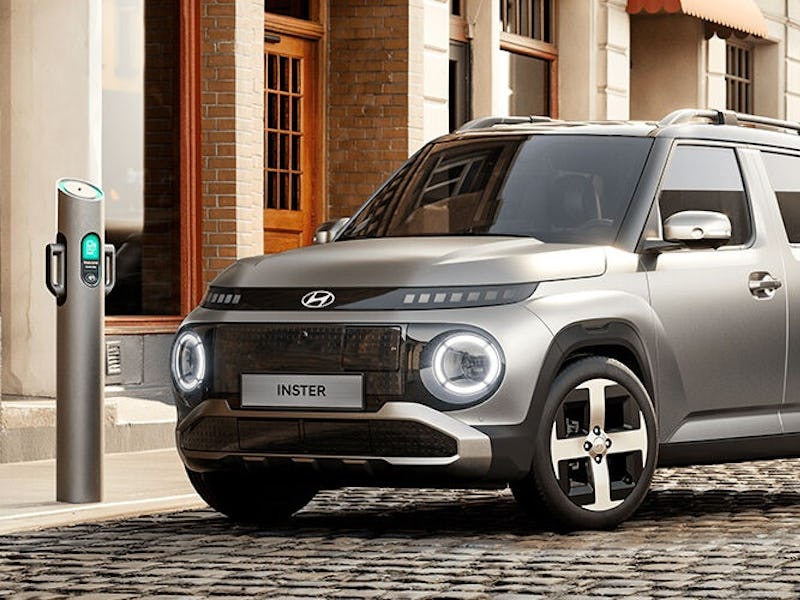Hyundai’s Small New Electric SUV Is Yet Another Affordable EV Americans Can’t Buy
The adorable Inster releases in Korea first.

You can go ahead and add Hyundai’s latest mini EV to the list of exciting affordable EVs that the U.S. isn’t getting.
Hyundai revealed the Inster, its entry-level subcompact EV, at the annual Busan International Mobility Show. Even though it falls on the smaller side of EVs, the Inster offers a decent range and packs a surprising amount of interior space, both in the trunk and the back seats.
As expected, Hyundai doesn’t have any plans to sell its mini EV in the U.S. — at least for now — which is bad news for anyone waiting for a small, affordable EV to finally break onto the scene.
An Adequate Amount of Range
Unlike Hyundai’s Ioniq lineup of EVs, the Inster was based on a gas-powered model called the Casper. The Inster still embodies its predecessor’s spirit since it’s meant for city driving and an easier time finding a parking space. However, it trades the traditional engine for a single electric motor that maxes out at around 87 mph for the base model and around 93 mph for the long-range version.
On the bright side, the slow 0 to 60 mph should mean fewer opportunities for speeding tickets.
Don’t expect much acceleration out of this mini EV either, since the base model goes from 0 to 100 km/h in around 11.7 seconds, while the long-range model is slightly faster at 10.6 seconds. The Inster’s long-range model runs on a 49 kWh battery, allowing for a 335 km range (208 miles), while the base model has a smaller 42 kWh battery, which gets a range of more than 300 km, or around 186 miles. Those specs aren’t impressive compared to Hyundai’s more powerful models, like the Ioniq 6, but it’s more than enough for someone using this as a daily driver to get around a city.
Maximizing Interior Space
The Inster’s performance might not be groundbreaking, but its interiors were cleverly designed to offer as much space as possible for a compact EV. For starters, the second-row seats can recline and slide, offering more legroom in what’s normally the cramped section of a smaller car. All of the Inster’s seats can fold down, including the driver’s, meaning you can fit a mattress inside for when you go car camping.
The Inster’s dashboard features plenty of physical buttons, too.
Hyundai even added a wireless charging dock in the center console, but it’s placed in a way where the driver can walk through to the other side of the car and exit the passenger side. Above the charger, there’s a 10.25-inch infotainment center, along with another 10.25-inch digital cluster that’s just big enough to show all the necessary details to the driver.
Everywhere But the U.S.
The Inster will hit the streets of Korea first this summer, while Hyundai plans to deliver the tiny EV to European, Middle Eastern, and Asia Pacific markets after that. The EV maker is still working on another trim called the Inster Cross, which will be the more rugged, outdoorsy version but only said that details for this will be announced at a later date.
As exciting as the Inster might be from a price and size perspective, Americans probably shouldn’t hold their breath; compact SUVs don’t have a foothold in the U.S. probably due to the perception that Americans are more interested in larger SUVs and trucks. Still, there’s evidence of an untapped demographic in the U.S. of people who want something like the Inster as a daily commuter — take the success of the Chevrolet Bolt as an example.
Hyundai hasn’t announced the official starting price of the Inster yet, but it was previously targeting a price tag below €20,000, or around $21,500. That price would help it compete against similarly-sized EVs in Europe from Volkswagen or Citroën but would be one of the most affordable options in the U.S.